Knowing to disconnect a gas stove is important in order to ensure the safety of you and your family. When not used properly or connected incorrectly, a gas stove can lead to dangerous consequences such as carbon monoxide poisoning, fires, or even explosions.
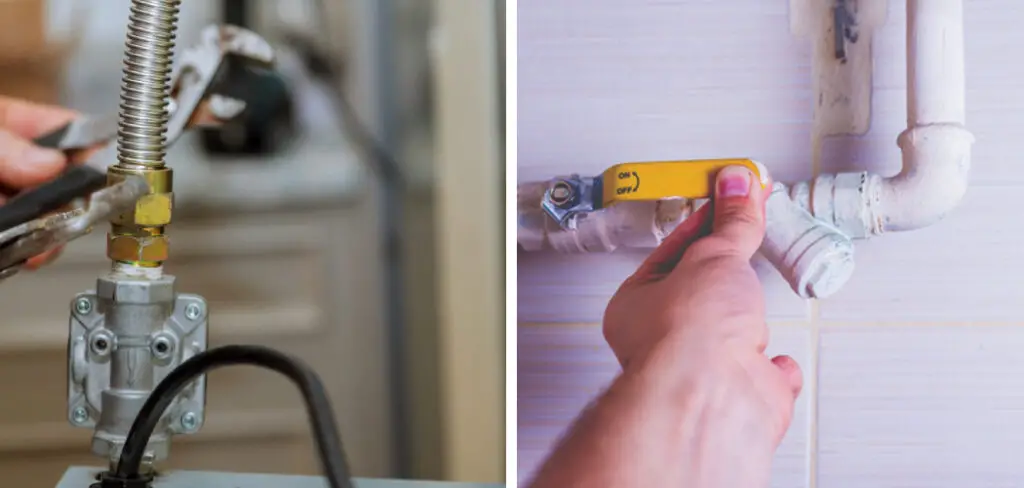
In addition, it’s important to be able to disconnect the gas supply for any installation or maintenance work on the stove.
The advantages of knowing to disconnect a gas stove are numerous. Not only will you be able to shut off the gas in case of an emergency safely, but it will also allow you to easily move the stove when needed.
In addition, if you ever need repairs or maintenance done on your stove, having knowledge of how to disconnect it can help you avoid any costly mistakes. In this blog post, You will learn in detail how to disconnect a gas stove.
Tools You Will Need
- Gas shut-off valve
- Wrench
- Pipe wrench
- Pliers
- Screwdriver
- Rag or cloth (for cleaning)
- Washers
- Nuts and bolts
Cleaning supplies (such as a vacuum cleaner, broom, and dustpan)
Putty knife (to scrape away any remaining putty or caulk)
Step by Step Processes for How to Disconnect a Gas Stove
Step 1: Inspect the Gas
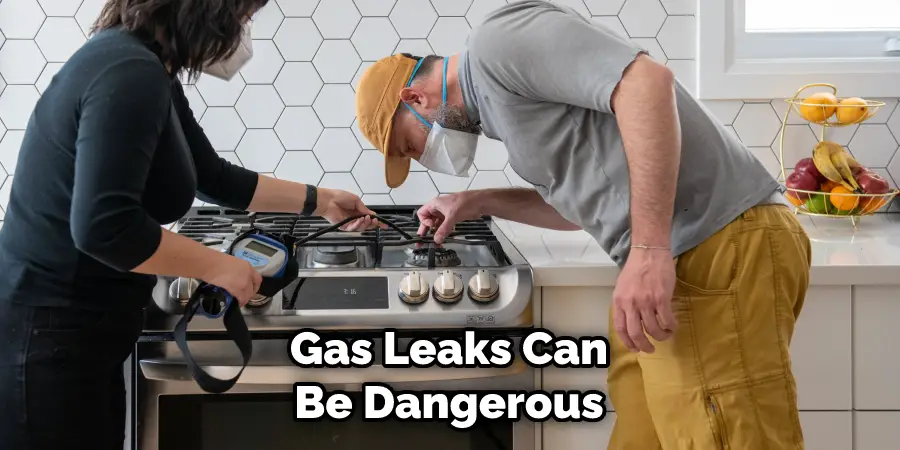
Before disconnecting your gas stove, check the connections for any signs of wear and tear. Gas leaks can be dangerous, so inspecting the lines for any signs of corrosion or weakness is important.
Step 2: Shut off the Gas Supply
Locate and shut off the main gas supply valve before beginning to disconnect the stove. The gas supply should be shut off at the valve, not just at the appliance. Unscrew the gas lines from both your stove and the gas source. It is best to use an adjustable wrench to loosen up any connections that may have become too tight over time.
Step 3: Remove the Connecting Nuts
Before safely removing your stove, you must disconnect the nuts that connect it to the gas lines. These are usually located at the back of the stove and should be removed with a nut driver or wrench.
If your gas stove is connected to an electrical outlet, turn off the power and carefully disconnect any wires. It is important to remember not to touch any electrical components when doing this.
Step 4: Unscrew Any Other Connections
Once all of the connections have been removed from your gas stove, unscrew any additional bolts or screws that may be holding it in place. Carefully lift your stove off the ground and remove it from its location. If you need help, ask an assistant to assist you in doing this.
Step 5: Clean Up Any Spills or Leaks
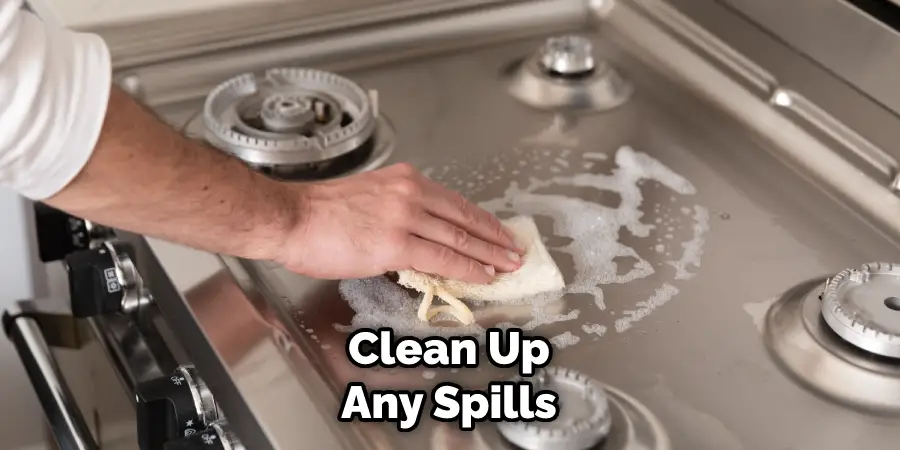
After disconnecting your gas stove, clean up any spills or leaks that may have occurred during the process. After you have disconnected your gas stove, make sure to secure all the parts in a safe place where they will not get damaged or lost. It is also important to remember to store the gas lines in a secure, well-ventilated area.
Step 6: Test for Leaks and Reassemble the Stove
After securing all the parts, test the gas lines for leaks using a soapy solution. Once you’re satisfied that there are no leaks, reassemble your stove and reconnect it to the gas supply.
Safety Tips for How to Disconnect a Gas Stove
- Make sure all gas valves on the stove are in the off position before beginning.
- Wear protective gear like gloves and a face mask when disconnecting your stove’s gas line to protect yourself from potential hazards.
- Use adjustable wrenches to loosen the old gas line fittings, then unscrew them by hand.
- Inspect the new gas line for any tears or cracks before connecting it to the stove.
- Securely tighten all connections with adjustable wrenches and use thread tape around the threads of each connection to ensure a leak-proof seal.
- Check for leaks in the gas line by brushing a solution, soap, and water onto the connections and looking for bubbling or suds around them.
- After ensuring there are no leaks, turn on the gas valves to check that the stove is connected properly. If everything works as expected, you can turn on your stove and begin using it normally.
Following these safety tips when disconnecting a gas stove will help ensure that the stove is properly disconnected and secured. Additionally, it helps protect you from any potential hazards that might occur.
Is There an Easy Way to Check If All of the Lines Are Disconnected Correctly?
Once you have disconnected the gas stove, it is important to ensure all lines are completely disconnected. This can be done with a simple pressure test. Take a piece of paper and hold it up to one end of the disconnected line.
If there is any air coming out of the other end, it means that there is still gas flowing through the line, and it needs to be disconnected again. If you don’t feel any air coming out, then all of the lines have been properly disconnected.
It is also important to check for any leaks in the connection as well. If there are any leaks present, they will need to be fixed before re-connecting the gas stove.
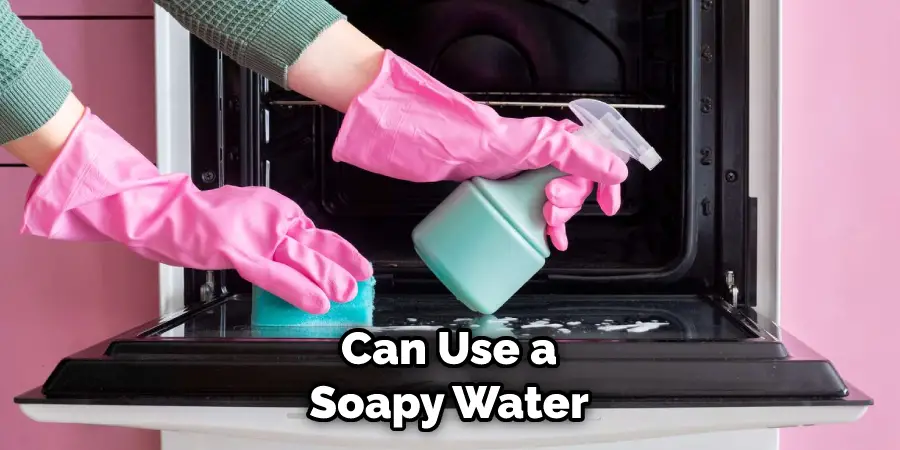
You can use a soapy water solution to check for leaks and brush it over the entire connection. If there are any bubbles forming, then this is an indication of a leak that needs to be repaired before re-connecting the gas stove.
Should You Call a Professional if You’re Not Comfortable With the Disconnecting Process?
If you are uncomfortable disconnecting your gas stove, it is always recommended to call a professional. A certified technician can disconnect the gas line and make sure that all safety precautions are taken. They will have the right tools, knowledge, and experience to do this safely and correctly.
It is important to note that disconnecting a gas stove can be dangerous and should not be taken lightly. If you are unsure of what to do or feel uncomfortable tackling the task yourself, it is best to call in a professional.
In addition, if your gas appliance has any sort of warranty, disconnecting it yourself may void the warranty. This means that if something goes wrong, you may be responsible for the repair costs.
It is always best to check with your manufacturer or service provider before attempting any repairs yourself. By calling a professional, you can ensure that your gas appliance is disconnected safely and professionally. Will guarantee that you have peace of mind knowing that your stove is in good hands.
Are There Any Special Requirements for Disposing of the Gas Stove?
When disposing of a gas stove, there are special requirements that must be followed in order to ensure safety. Before disconnecting the gas stove, it is important to ensure all gas lines have been properly shut off and capped. Additionally, it is important to make sure that all electrical power has been disconnected from the appliance before beginning any work.
If the appliance is to be disposed of, it may be necessary to contact a waste management company for proper disposal instructions, as hazardous materials must not be placed in landfills or other public areas. Additionally, local ordinances and regulations should be followed when disposing of an outdated gas stove.
After all safety requirements have been met, the gas stove may then be disconnected from its fuel source. All connections must be firmly shut off and checked for leaks before any further work is done. If a leak is present, it must be fixed immediately in order to ensure safety.
Are There Any Health and Safety Regulations That Must Be Followed When Disconnecting a Gas Stove?
When disconnecting a gas stove, it is important to adhere to any health and safety regulations that may be in place. This can include ensuring there is adequate ventilation when working with the equipment and wearing appropriate protective gear such as goggles, gloves, and a mask.
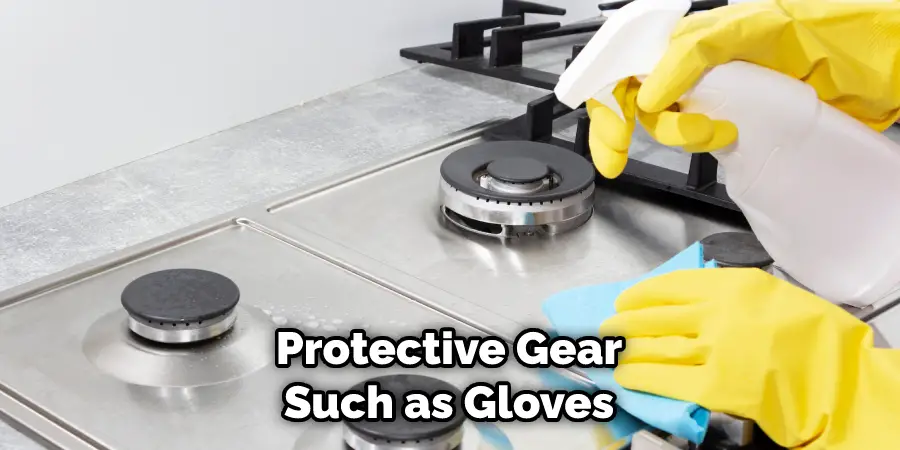
Additionally, you should ensure all connection points are properly sealed before attempting to disconnect the gas stove. It is also important to turn off the gas supply before attempting to disconnect the stove and any other appliances that may be connected.
Furthermore, you should ensure all pilot lights have been extinguished, and no open flames are present in the area. Finally, calling a professional for assistance is essential if you are unsure about any steps in the disconnecting process.
By following these safety regulations and guidelines, you can ensure that the disconnection of your gas stove is completed safely and effectively. Once all necessary precautions have been taken, you can confidently proceed with the task at hand.
Conclusion
The main disadvantage of disconnecting a gas stove is the safety risk involved. There is a risk of gas leakage or an explosion if the proper procedures and precautions are not followed. It is important to be aware of all safety measures when attempting to disconnect a gas stove. With this in mind, it is recommended that you use a professional for any kind of gas work.
In conclusion, disconnecting a gas stove is not as difficult as it sounds. All you need to do is turn off the gas valve, disconnect the connections from the wall, and release any pressure that may have built up in the lines.
Make sure to turn on all your burners during this process so there isn’t any residual pressure in the system. Be sure to use caution and wear protective gear when disconnecting a gas stove, as you don’t want to expose yourself or your family to any dangerous elements.
I hope this article has been beneficial in learning how to disconnect a gas stove. Make Sure the precautionary measures are followed chronologically.
Professional Focus
Angela Ervin, a former interior designer turned blogger, specializes in kitchen design and renovations. Through her website, she blends her passion for cooking with design expertise, sharing practical and creative ideas. Known for balancing functionality and beauty, Angela’s insightful content has made her a trusted voice in home design and lifestyle.
About the Author
Angela Ervin, an experienced interior designer and blogger, combines her passion for kitchen renovations with storytelling. Living in Petersburg with her family, she enjoys cooking and testing her projects firsthand. Known for her humor and relatable style, Angela shares creative, functional design insights through her content, making her a trusted voice in home design.
Education History
University: Virginia Commonwealth University
Degree: Bachelor of Fine Arts (BFA) in Interior Design
- Angela’s education at VCU focused on mastering core interior design principles, including spatial planning, color theory, materials selection, and sustainable design practices.
- She gained hands-on experience through studio projects and collaborative design exercises, which honed her ability to create functional and aesthetically pleasing environments.
- Her coursework also emphasized problem-solving and practical applications of design, preparing her for real-world projects like her self-directed kitchen renovations.
- The program’s strong foundation in both technical skills and creative expression shaped Angela’s ability to seamlessly integrate form and function in her work.


